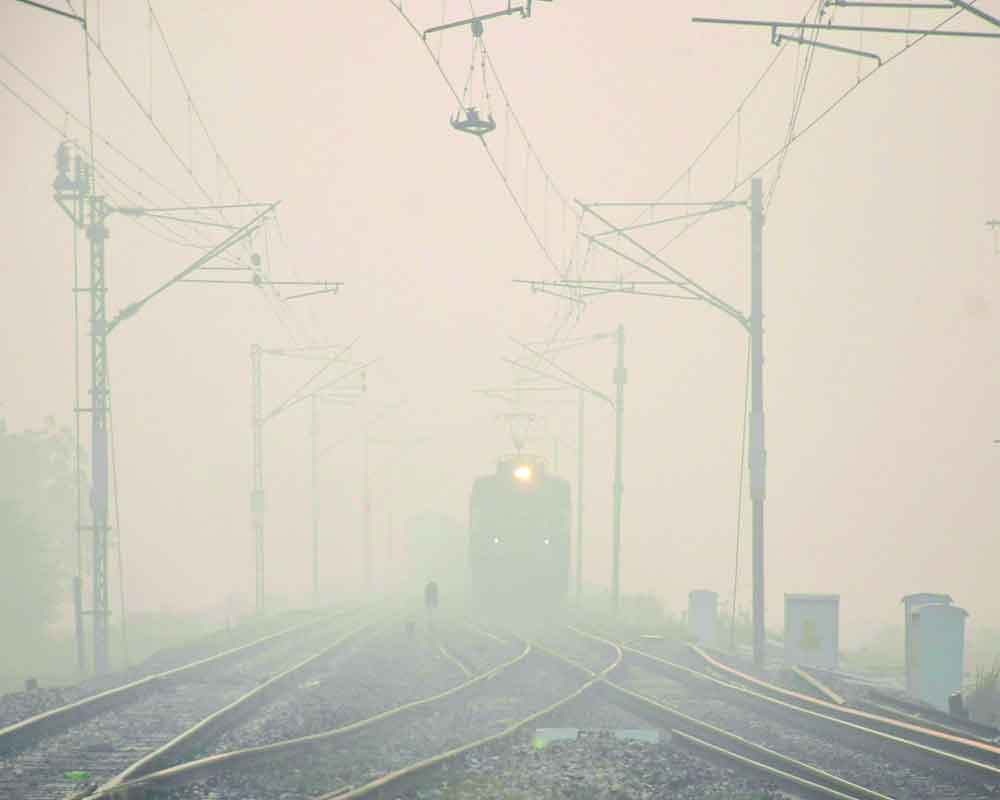The occurrence of fog due to frequent western disturbances and high speed of winds in north India, including Delhi and NCR, has been lowest in the current winter compared to the last 17 years. The India Meteorological Department (IMD) said north India, including Delhi and NCR, witnessed severe fog only on January 18 when the visibility was reduced to 0 to 50 metres.
Fog is a seasonal feature that commences around November and goes on till February, impacting road, air and rail traffic badly. Generally, 10 to 15 days in January and 10 to 12 days in December are marked for moderate to severe fog every year.
As per data, fog occurrence was only 19 days (95 hours) of total duration in 2017-18 as compared to 29 days (174 hours), 20 days (93 hours), 26 days (120 hours) for 2014-15, 2015-16 & 2016-17, respectively. In 2017, 11,090 people died of fog related road accidents while 9,317 people died in 2016.
In the normal circumstances, plains witness rainfall during winter which allows formation of ground frost and moisture. This year, snowfall and rain restricted to hills only.
Plains have received less rainfall which led to little moisture on the ground. Due to this weather conditions are clear and fog occurrence are less in north India during the ongoing winter season.
“When passage of a western disturbance affects the plains on a large scale it causes widespread rain and thundershower activities. This is followed by dense to very dense fog formation,” the IMD said.
The Met Department said January witnessed seven western disturbances this year while December saw 6-7 western disturbances against the normal of 4-5 every year. February witnessed one western disturbance in the first week while the second one is expected on February 13 which will bring rainfall, hailstorm and thunderstorm in several parts especially north east and southern peninsula of the country.
“Forecasting of fog still remains a grey area. Weather models cannot predict fog directly and can only be done through objective and subjective methods,” said IMD officials.
“Dense fog in Delhi and north India (from December to January) is the most common feature of the winter which leads to massive delays and cancellation of flights and trains. The reason for fog in north India is entirely because of western disturbance affecting the hills of Jammu & Kashmir which lead to a sudden reversal of winds from the normal dry and cool northwesterly to humid easterlies or southeasterlies which could cause widespread fog,” said a private weather broadcaster.
According to Skymet, the reason for fog formation in East India is primarily due to its proximity to water bodies (River Ganga) and slow wind speed.
“In the hilly areas of the Northeast, characteristics of fog are completely different from what they are in the plains of East India. The terrain of Northeast India is a mix of everything, from hills and valleys to mountains, which is conducive for trapping fog for longer durations. Northeast is well known for dense fog throughout the winter season due to persistent flow of moist air from River Brahmaputra. Lucknow, Allahabad in Uttar Pradesh, Patna in Bihar, Kolkata in the Indo Gangetic plains and Jorhat in Northeast India are some of the places that witness dense to very dense fog during winters,” the Skymet said.
Dry Central India is generally escapes the wrath of fog in the winter season. However, places closer to the sub-tropics (at around latitude 23?N) like Jabalpur, Indore and Nagpur do witness fog sometimes. Changing weather conditions in North India leads to rare occasions of fog in Central India.


























